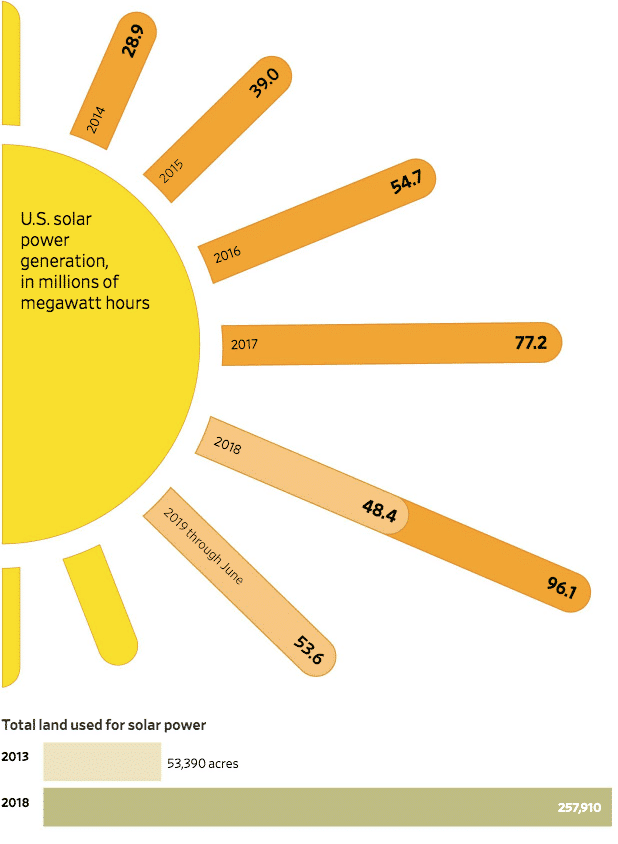An increasing number of U.S. farmers are installing solar panels on their land, both for personal use and sale to utilities, as a way to make extra money and become more self-sufficient. Around 90,000 U.S. farms had solar equipment in 2017, about three times as many as in 2012, according to the Department of Agriculture.

“Solar panels are being installed across the Farm Belt for personal and external use on land where growers are struggling to make ends meet,” Kirk Maltais reports for The Wall Street Journal. “The tit-for-tat tariffs applied by the U.S. and China to each other’s goods have cut demand for American crops. Futures prices for corn, soybeans and wheat are all trading around their lowest levels since 2010. Making matters worse, record spring rainfall left many farmers no time to plant a decent crop.”
Farmers who want to sell electricity to utilities generally lease land to power companies to build the panels. That can generate more than $1,000 in revenue per month, according to farmers and renewable-energy experts.
“Some farmers say they are hesitant to sign control over their land to power companies for years at a time. If crop prices rebound, they say, rent from power companies could fall behind what they could make growing crops on that land,” Maltais reports.
“But the worst downturn in decades is leading others to take that risk. Farm bankruptcies, known as chapter 12 filings, increased 13 percent in the first half of this year to the highest level since 2012, according to the American Farm Bureau Federation.
(This report first ran on The Rural Blog, a digest published by the Institute for Rural Journalism and Community Issues at the University of Kentucky.)
The Rural Blog is a publication of the Institute for Rural Journalism and Community Issues based at the University of Kentucky.






